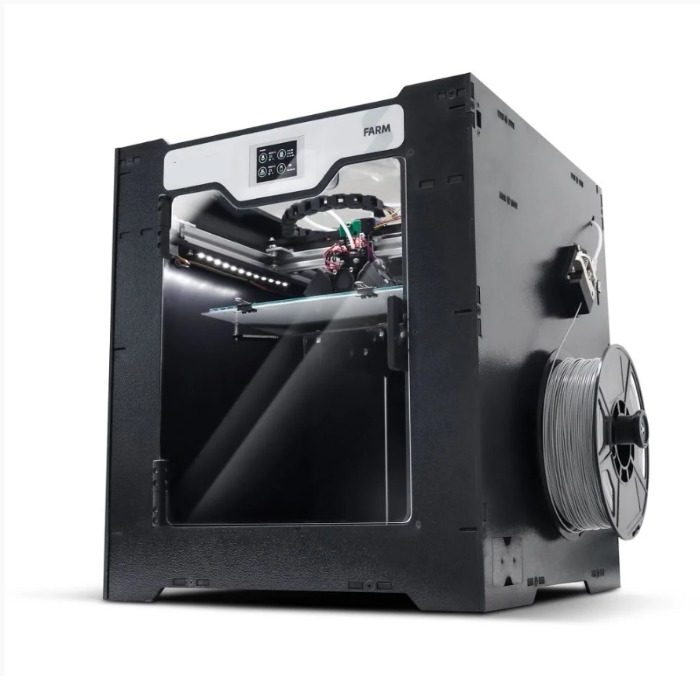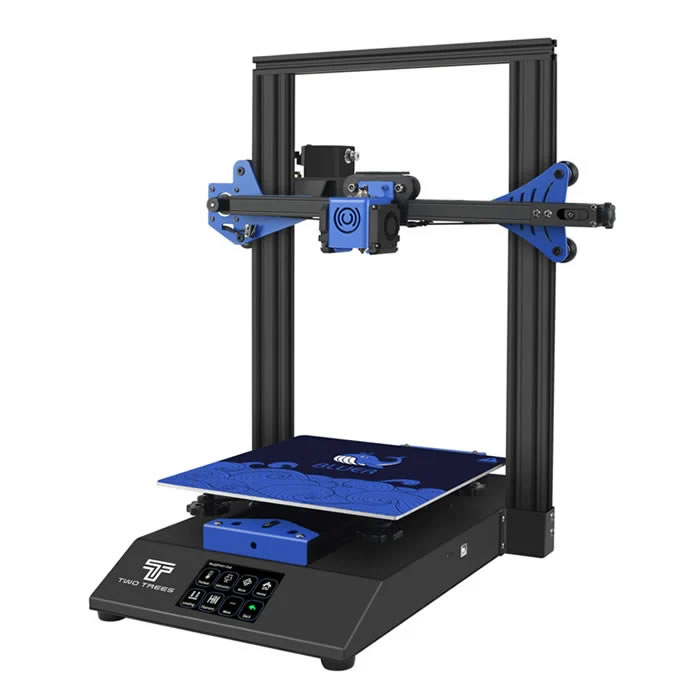Compare FARM vs Bluer
Comparison between the best 3D printers
Choose the best 3D printer at the best price. The cheapest 3D printers are here.
Buy a 3D printer here with 3D Fila.
 |
 |
|
| Model | FARM |
Bluer |
| Printing Material | Filament | Filament |
| Buy Filament for Sethi 3D FARM | Buy Filament forTwoTrees Bluer | |
| Estimated price | $1127,00 | $169,00 |
| Manufacturer | Sethi 3D | TwoTrees |
| Release Year | 2021 | 2019 |
| Print Volume [mm] | 240x240x240 | 230x230x280 |
| Printer Size [mm] | 550x42x500 | 400x410x520 |
| Weight [kg] | 15,7 | 8 |
| Power Loss Recovery | YES | YES |
| Enclosed printer | YES | NO |
| Bed Leveling | Automatic | Manual |
| Filament End Sensor | YES | YES |
| Bed type | Heated | Heated |
| Power supply system | Bowden | Bowden |
| Standard nozzle | 0,4 | 0,4 |
| Maximum Nozzle Temperature [°C] | 270 | 260 |
| Maximum Bed Temperature [°C] | 120 | 100 |
| Maximum printing speed [mm/s] | 80 | 200 |
| Filament holder | YES | YES |
| Camera for supervision | NO | NO |
| Recommended filaments | PLA, PETG, Tritan, Flex, ABS | PLA, PETG |
| Recommended slicers | Cura, Simplify, Slic3r | Cura, Simplify, Slic3r |
| Maximum Resolution [mm] | 0,1 | |
| Processor | MKS Robin Nano V1.2 + TMC2208 | |
| Display | Touchscreen TFT | Touchscreen TFT 3,5'' |
| Power Supply | 450 W | 240W |
| Connectivity | USB | SD / USB |
| Operating systems | Windows, Mac, Linux | Windows, Mac, Linux |
| Date of registration in the system | 2022-10-11 | 2021-09-20 |
| Release date | 2021 | 2019 |
| Extra features | Sethis Farm printer offers a generous 240 x 240 x 240 mm print area, ideal for large projects. Its intuitive touchscreen display makes it easy to operate, while the intelligent sensor prevents problems by detecting filament shortages or jams. Its power recovery feature allows you to resume printing after interruptions. It stands out for its 9-point optical auto-leveling and high-performance heated bed, ensuring accuracy and versatility on different materials. Its 32-bit electronics and silent drivers promote a smooth and efficient experience. In addition, the Farm has a closed cabinet, expanding the range of usable polymers, and a turbo cooling system to speed up the process between prints. The machine also offers practicality with a storage drawer and simplified software updates. | The Bluer offers interesting features such as automatic bed leveling, a 3.5-inch color touchscreen for easy operation, and a filament sensor to prevent print failures. It has a robust metal extruder and a generous 230 x 230 x 280 mm print volume, suitable for a variety of projects. The community mentions improvements made by Two Trees based on feedback, increasing its reliability. |
| Support for multiple colors and materials (AMS and CFS) | NO | NO |
Notes * |
||
| Cost-benefit | 6 / 10 | 7 / 10 |
| Hardware | 3 / 10 | 2 / 10 |
| Tela | . | . |
| Print volume | 3 / 10 | 3 / 10 |
| Performance | 0 / 10 | 2 / 10 |
Conclusion |
| In comparing the Sethi 3D FARM and the TwoTrees Bluer 3D printers, the decision largely depends on the priorities of the user. The FARM, with its substantial print volume and enclosed design, is well-suited for larger projects and utilizing a wider range of filament types. Its advanced features such as automatic bed leveling, a robust power recovery system, and an extensive heated bed temperature capability make it a competent choice for serious hobbyists or professionals who require precision and reliability in their prints. However, this printer comes at a significantly higher price point, which may be a barrier for some users. On the other hand, the Bluer presents a more budget-friendly option without compromising significantly on essential functionalities. It offers a respectable print volume and several useful features like automatic bed leveling and a filament sensor, making it a solid choice for beginners or casual users who are exploring the world of 3D printing. Additionally, its lighter weight and smaller footprint make it more accessible for those with limited workspace. In terms of overall value, the Bluer ranked slightly higher in cost-benefit, despite having a more limited performance when compared to the FARM. If the goal is to achieve high-quality results for complex projects and materials, the FARM clearly outshines the Bluer. However, for those prioritizing affordability and ease of use, the Bluer remains an attractive choice. Ultimately, choosing between these two printers hinges on budget constraints and specific printing needs. More experienced users might justify the investment in the FARM, while newcomers to 3D printing could find the Bluer to be a practical and economical starting point. |

